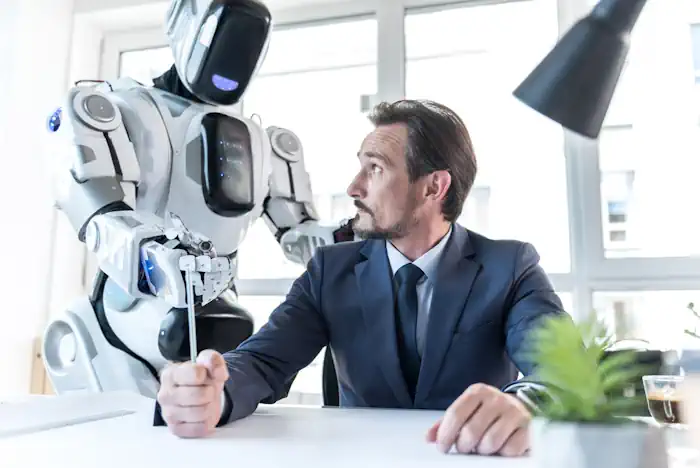Striking a Balance: Safeguarding Workers and Fostering Innovation in the Workplace AI Era
The integration of artificial intelligence (AI) into the modern workplace has sparked a contentious debate in the ever-changing landscape of technology. Senator Bob Casey (D-PA) has emerged as a champion of this concern, spearheading the No Robot Bosses Act in the Senate. This proposed legislation seeks to shield employees from the potential repercussions of being fired or having hiring decisions dictated solely by automated systems.
AI in the Workplace
The fear of machines replacing human workers and the subsequent loss of jobs and dignity has become an urgent issue. Senator Casey is resolute in his mission to safeguard workplace security, as well as the value and dignity of workers. He argues that implementing checks on the use of AI in the workplace is paramount to prevent individuals from being laid off by a robot.
The No Robot Bosses Act calls for employers to incorporate human oversight into the utilization of AI. Its aim is to strike a delicate balance between promoting AI growth and protecting workers from potential exploitation. However, critics argue that such legislation may hinder innovation and place unnecessary constraints on employers.
Josh Jackson, co-founder of The AI Association, asserts that the proposed act leans too heavily towards restricting employers. He cautions that excessive government regulation could impede the development and implementation of AI technologies, which have the potential to enhance efficiency and productivity across numerous industries.
While Senator Casey’s proposal has garnered support from worker advocacy groups, the AI industry remains cautious about excessive government intervention. They contend that stringent regulation might stifle innovation and impede technological advancements that could benefit both businesses and workers.
To address these concerns, Speaker Kevin McCarthy has organized briefings for members of both political parties to consult industry experts. McCarthy’s goal is to educate lawmakers about AI, ensuring that informed decisions are made. Republicans in Congress have cautioned against excessive government intervention in AI, emphasizing the importance of fostering innovation while safeguarding worker rights.
Transparency Encouraged
The No Robot Bosses Act also includes a provision that mandates employers to disclose when and how automated systems are utilized in the workplace. This transparency aims to shed light on how algorithms and automated systems are used by employers to monitor employees and evaluate their performance. The objective is to ensure that employees are not subjected to invasive surveillance without their knowledge or consent.
In addition to the No Robot Bosses Act, Senator Casey has introduced another proposal called the Exploitative Workplace Surveillance and Technologies Task Force Act. This legislation aims to establish a task force, led by the Department of Labor and the Office of Science and Technology Policy, to oversee workplace surveillance through AI. The task force would be responsible for monitoring the impact of AI on workers and submitting regular reports to Congress.
Protecting Workers’ Rights
The role of this task force is pivotal in striking the delicate balance between protecting workers’ rights and fostering innovation. By examining the use of AI in the workplace, the task force can provide valuable insights into potential issues, such as discriminatory practices or the erosion of worker privacy.
As the debate over regulating AI in the workplace rages on, it is crucial to craft legislation that promotes innovation while safeguarding worker rights. Striking the right balance is a complex task, but it is essential to ensure that the potential benefits of AI are realized without compromising the well-being and security of workers.
In conclusion, Senator Casey’s No Robot Bosses Act and the proposed Exploitative Workplace Surveillance and Technologies Task Force Act have ignited significant discussions on regulating AI in the workplace.
While the goal is to protect workers from potential exploitation, critics argue that excessive regulation may hinder innovation. Finding the right balance is imperative to foster AI growth while safeguarding worker rights, ensuring a future where technology and human labor can coexist harmoniously.


